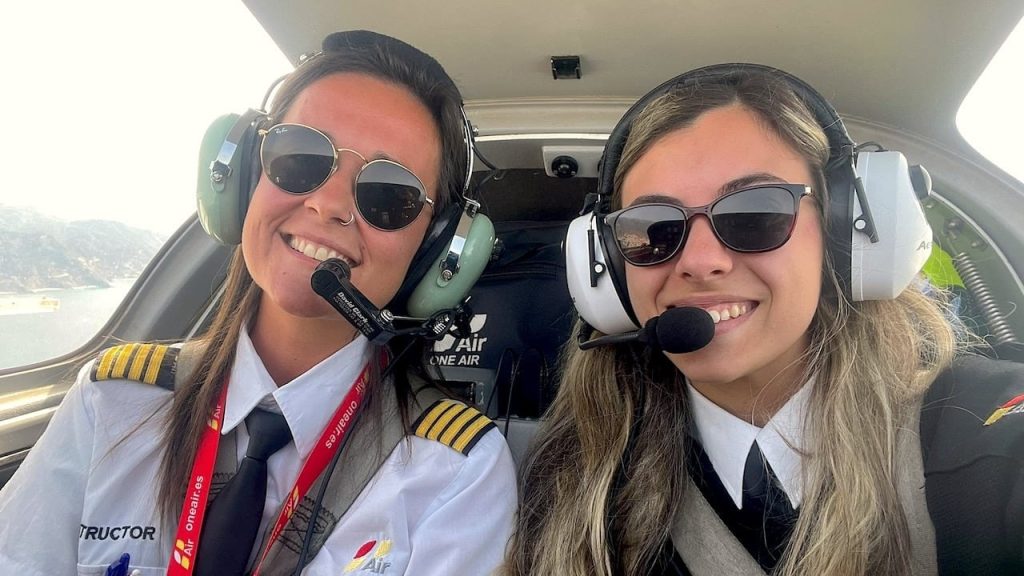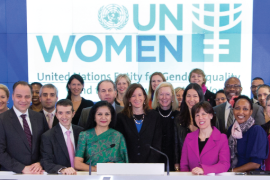“We needed to be assertive as women in those days—assertive and aggressive—and the degree to which we had to be that way depended on where you were. I had to be in the front row.” — Katherine Johnson, NASA mathematician.
Every August 19th, the world pauses to celebrate National Aviation Day, a holiday first proclaimed by U.S. President Franklin D. Roosevelt in 1939 to honor the birthday of Orville Wright, one of the pioneers of human flight. Over the decades, the day has grown into a global moment of reflection on aviation’s remarkable progress; from fragile wood-and-cloth planes to jetliners, spacecraft, and futuristic drones. Yet, within this inspiring story, one chapter has often been underwritten: the women whose genius, grit, and innovation in aircraft engineering and design made many of these milestones possible.
While we often celebrate daring female pilots like Amelia Earhart and Bessie Coleman, the engineers, the women who calculated the lift, reimagined the wings, and redesigned engines, remain hidden figures. Their contributions were often overshadowed by their male colleagues, but their resilience carved open pathways for future generations. This National Aviation Day is an opportunity to tell their stories, to honor the barriers they broke, the challenges they faced, and the successes they built for all of us.
Breaking Into a Closed Cockpit
In the early 20th century, engineering especially aeronautical engineering was considered unsuitable for women. Universities discouraged them, employers ignored their applications, and society expected them to stay within “acceptable” professions like teaching or nursing.
One of the earliest women to defy these limitations was Elsie MacGill, affectionately known as the “Queen of the Hurricanes.” Born in 1905 in Canada, MacGill became the first woman in the world to earn a master’s degree in aeronautical engineering. She later oversaw the production of Hawker Hurricane fighter planes during World War II, which were critical in the Battle of Britain. Strikingly, she achieved this while battling polio, a disease that left her using a wheelchair for the rest of her life. “My presence in engineering was pioneering simply because I was a woman… I wasn’t prepared to accept any special treatment,” she once said. Her story is one of not only engineering brilliance but also resilience in the face of physical and societal barriers.
Another forgotten trailblazer is Hilda Lyon, a British engineer in the 1930s. Lyon developed what became known as the “Lyon Shape,” a streamlined aerodynamic design that influenced airships and submarines. At a time when women were rarely seen in technical roles, Lyon’s innovation quietly advanced aviation efficiency. Though her name never became widely known, her work lived on in engineering textbooks and in the aircraft that benefited from her insights.
Hidden Figures in Plain Sight
The story of women engineers in aviation cannot be told without honoring the “hidden figures” of NASA. Mary Jackson, NASA’s first Black female engineer, began her career testing aircraft in wind tunnels. Her expertise in aerodynamics helped advance high-speed flight research during the early years of the space race. Jackson later became a champion for women and minorities in STEM, mentoring young engineers who were struggling to find their place in a male-dominated field.
Katherine Johnson, who later became famous through the book and film Hidden Figures, also began with aviation. Her precise calculations for flight trajectories ensured that test pilots and astronauts alike could fly and land safely. Johnson once said, “We needed to be assertive as women in those days, assertive and aggressive, and the degree to which we had to be that way depended on where you were. I had to be in the front row.” Her courage gave visibility to countless women who would follow.
The Challenges They Faced
For women engineers in aviation, the challenges were multilayered. Gender stereotypes painted engineering as “too technical” for women, while workplaces often refused to hire or promote them. When they did gain entry, their contributions were downplayed or credited to men. Many worked in isolation, lacking mentors or professional networks.
Women of color faced additional barriers. For Black women like Mary Jackson, access to training often meant fighting segregationist systems. For women in Asia, Africa, and the Middle East, cultural expectations sometimes discouraged technical careers entirely. Yet, time and again, these women persisted.
They overcame by relying on sheer determination, often working harder than their male peers to prove their worth. They leaned on education, building credentials that no one could deny. And increasingly, they formed communities, like Women in Aviation International (WAI), to uplift one another, share opportunities, and advocate for change.
Rising Voices of Today
Today, the aviation industry remains unbalanced; women represent less than 10% of licensed aircraft maintenance engineers worldwide, according to the International Civil Aviation Organization (ICAO). Yet, progress is undeniable, and modern voices are carrying the torch forward.
Dr. Swati Mohan, an Indian-American aerospace engineer, played a leading role in guiding NASA’s Perseverance rover to Mars in 2021. Her calm announcement, “Touchdown confirmed,” was broadcast worldwide, symbolizing not just a space milestone but the quiet triumph of women engineers at the center of historic moments.
Similarly, Tiera Fletcher, an American aerospace engineer, co-led the design of NASA’s Space Launch System, a rocket intended to carry humans to Mars. Fletcher has spoken often about mentorship and encouraging young girls to pursue STEM careers. “If you can see it, you can be it,” she tells her mentees, echoing the importance of representation.
In Africa, women engineers are stepping into roles once deemed impossible. Ethiopian Airlines, the continent’s largest carrier, has been training female aircraft technicians and engineers, with women now seen in hangars and maintenance workshops. Their presence is rewriting narratives about what African women can achieve in aviation.
Why Their Stories Matter
Representation is not just symbolic, it’s practical. Diverse teams design safer, more innovative aircraft. Women engineers bring perspectives shaped by different life experiences, leading to fresh approaches in problem-solving. In a time when aviation faces major challenges from reducing carbon emissions to improving global safety—ignoring half the population’s talent pool is simply not an option.
By celebrating women engineers and innovators, we not only honor the past but also inspire future generations. A young girl who reads about Elsie MacGill or Swati Mohan might dream differently. She might see the hangar as her classroom, the cockpit as her laboratory, and the skies as her canvas.
A Call to Action
This National Aviation Day, the celebration must move beyond words into action.
- Educators: Introduce the stories of female engineers into classrooms, so girls know the role women have always played in aviation.
- Industry leaders: Establish mentorship pipelines and inclusive hiring practices that attract and retain more women in engineering roles.
- Parents and communities: Encourage daughters as much as sons to explore science kits, flight simulations, and engineering projects.
- Media: Tell these stories widely. Representation in films, books, and news features has the power to reshape how society views women in aviation.
Most importantly, let’s ensure that today’s women in aviation are not hidden figures but celebrated innovators.
Giving Women Their Wings
National Aviation Day is a reminder of how far humanity has come since Orville Wright’s first flight. But it is also a call to remember those who lifted aviation in ways we rarely acknowledge. Women like Elsie MacGill, Hilda Lyon, Mary Jackson, and countless others designed, tested, and innovated the skies we fly through today. Their struggles were real, the doubts, the discrimination, the isolation, but so were their triumphs.
As we look to the future of aviation, sustainable fuels, electric aircraft,and space tourism, the voices and talents of women engineers are not just welcome; they are essential. On this National Aviation Day, let us honor their stories, amplify their voices, and ensure that the next century of flight is one where women not only soar but lead.
Because when women engineer the skies, the world rises with them.





Comments are closed.